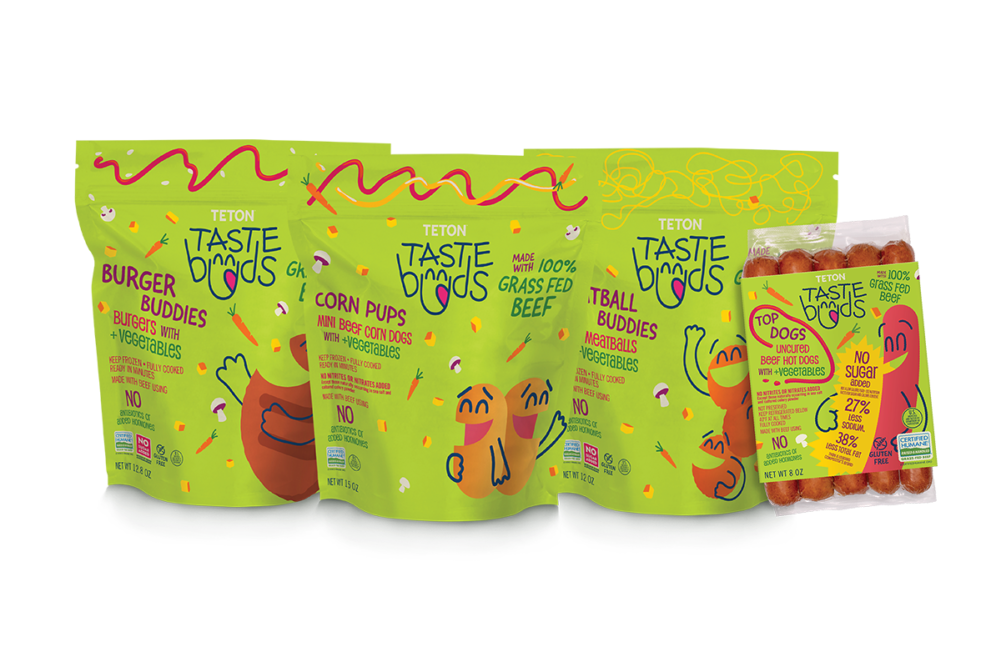Grass-fed beef was on a huge upswing before the pandemic and many of the supply chain issues related to it.
Now that things are back to closer-to-normal, retailers are looking to stock their cases with more grass-fed options, and suppliers are meeting the demand with new products and ramped-up production.
This fall, Loveland, Colo.-based Grass Fed Foods is adding a new product to its lineup of blended products for kids.
The new mini corndog joins other blended products, including a hot dog and a meatball, that have been big hits in taste tests and are getting the attention of many of the nation’s top grocers, said Jeff Tripician, Grass Fed Foods’ president and CEO.
The blended products have much less fat and sodium than their conventional counterparts and are chockful of nutrients, Tripician said. And they represent a new direction in the grass-fed space.
“It’s a product that does a little bit more” than the traditional limited grass-fed lineup of steaks, burger patties and other standard meat products, he said. “It’s something consumers understand but, at the same time, makes them say, ‘Wow, we didn’t expect that.’”
When Grass Fed Foods introduced its blended hot dog product earlier this year, taste-testers said it tasted even better than a conventional hot dog, Tripician said. Now, people within Grass Fed Foods said the new corndog tastes even better than that.
Still a newcomer to the kids’ market, Grass Fed Foods is also making adjustments as it goes, Tripician said. The company found that parents would cut up the blended meatball, for instance, and mix it with other foods. In response, Grass Fed Foods began making a looser version of the product that was easier for kids to eat and for their parents to prepare in kid-friendly ways.
“We’ve talked to everyone from Whole Foods to Sprouts to Kroger, and they’re all saying, ‘This is the right idea,’” he said.
Next on the horizon for Grass Fed Foods is a lineup of blended products aimed at the 50-plus market, Tripician said.
The impetus for that, he said, was a recognition that older consumers are on so many medicines, why not make foods that can help meet some of their same nutritional goals?
The product line, Thrive, will focus on lower-fat, lower-sodium foods that can help with inflammation, arthritis, mental acuity, cancer prevention and a host of other health problems.
Even that won’t be the end of Grass Fed Foods’ run of innovation, Tripician said. Next up is a planned line of value products that blend grass-fed meats with lower-cost ingredients, the aim being “a dollar less per unit,” he said.
“Based on the conversations we’ve had, there is across-the-board interest” in blended grass-fed products, he said. “We’re very bullish on it.”
The demand is not just limited to blended products, Tripician. Grass Fed Foods is seeing double digit growth across the board.
Because of the lower prices, processed is doing better than fresh, but fresh is holding its own, he said.
“Chains are saying they need grass-fed behind the glass, front and center, which is a great sign,” he said.
A “paradigm shift” in production
With its product roster expanding and demand on the rise, Grass Fed Foods sought out a new producer partner that could give it the volume and quality it needed.
The company found its ideal partner in Matador Ranch, a 380,000-acre ranch in Montana that specializes in regenerative agriculture.
And that will be just the first of many such ranches Grass Fed plans to partner with in coming years, Tripician said. Up to 20 ranches, all of which have more than 200,000 acres, could be providing beef for Grass Fed.
With the record-setting drought in the Western US cutting into cattle volumes, many producers have needed to finish cattle raised on grass to feed because of shortages in the conventional market, Tripician said.
“That spurred us to say, ‘Who’s going to fill in that void?’”
In the past, Matador Ranch normally passed along its cattle to be finished elsewhere, Tripician said. Under its deal with Grass Fed, cattle will stay at the ranch their entire lives.
“It’s a paradigm shift,” he said.
Under the deal, Grass Fed Foods has first right of refusal for cows raised on the ranch. If Grass Fed doesn’t buy them, Matador Ranch can sell it to any other buyer, Tripician said.
This article is an excerpt from the October 2023 issue of Supermarket Perimeter. You can read the entire Grass-fed feature and more in the digital edition here.

